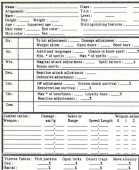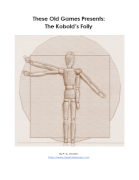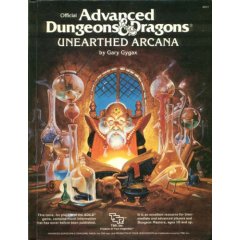I am having a failure to campaign. I wanted to do a Star Wars campaign, but my potential players spotted the Marvel Multiverse Role-Playing Game on my shelf and dove into a rabbit hole of Super Heroes. I wanted to playtest some ideas for my module POP-001 Reverants of Revenants of the Lost Temple but got sidetracked by prototyping a new RPG. Add in the new laser, the tablesaw, and the 3d printer and I am at a loss for what to do first or now.
So back to basics. I am going to review the games I have acquired over the last year to 18 months. I just need to pick a good one to start on.
To get this game design bug out of my head, I want to talk about the Marvel game.
Marvel... it is inescapable right now. We have a couple of movies and TV shows coming out at the same time that the company is kicking out all kinds of new comic books. That's a mighty big rabbit hole to live in. When my kids and friends saw the Marvel RPG, instead of playing the game we ended up watching 3 movies while digging through a box of comics and perusing the rules.
Friends, I have wasted a day.
I'll review the Marvel rules eventually, but I THINK I understand what changed between my D&D of the 1970s and 1980s and e5 thanks to this Marvel ruleset.The social purpose changed. As a historian, I like this concept. In history, historical people wanted to focus on the ills of the world, but could not effectively mesh the current massive problem with underlying social issues which were also occurring. It usually results in half measures and more problems. The idea the gaming changed on the social side is neat.
D&D started as a tactical game; it evolved from wargaming. I have X guys and you have Y guys, let's throw some dice to see what happens. Ok?
D&D adds special abilities and roleplay to a tabletop game, which changes that random dice dynamic. Individuals become heroes, it is important for them to have a past, present, and future and now we have Player Characters.
When I think of a classic movie, it will be from the 40s, 50s, or 60s. Many of these were big-budget affairs that depicted massive set-piece battles but also had an undercurrent where a gang of scrappy heroes would be the solution. Or they were low-budget and had to have a gang of oddball heroes to compete with big-budget movie spectaculars. This humanized the story and was a satisfying use of characters. Nobody saw the oddball scrappies coming.
It doesn't even have to be a war movie. Flight of the Phoenix is a movie about people literally building a plane in flight. Just like war movies, it elevates individual characters to heroes or solution-maker status.
Even though there were far fewer character choices in OD&D, Basic D&D, and e1, not all of the rules were harmonized in the mechanics. Because the mechanics were often unique to the class or monster, it was hard for the DM to determine if a scenario was a real challenge. Add in wily player characters, and really strange things happen. This mirrors the movies of the day. No one saw the ending coming and DMs didn't try to adapt to the players. They just rolled with whatever happened because as long as the players were willing to play, there were always new bad guys and challenges.
Today, if you ask someone about a "classic movie", the answers are very different. It's Star Wars, Batman, Harry Potter, Kill Bill, The Usual Suspects, etc.
What is different about these films from older classics? Usually, the viewer has awareness of the heroes from the get-go and the bad guy has the advantage of knowing the heroes just as well as the viewer while the heroes are unaware of their opposites' goals.
Back in the day, D&D didn't have a Session 0. The DM designed his campaign or story in a vacuum and the players subvert this by building the plane in flight. Session 0 was a vague idea when the DM told the players about the world their characters lived in as they rolled up characters, but it occurred at the same time as Session 1. The players are adapting to the DM's world, without the DM thinking about what the characters were all about. Sure there were minor questions to be answered, but those were usually no big deal:
"Sure you can be a paladin, an assassin, or a cleric! Any class you like is available."
"Yes, you can have full-plate armor, everyone does. It's all the rage, you are cool."
"You want a pseudo-dragon as a familiar? Awesome!"
It was almost unseemly for the DM to try to negate a character's abilities by reshaping the previously written materials. Yeah, we have all played those games where clerics can't heal, paladins are evil, or wizards are hampered by widespread anti-magic. Those results are really horrible and DM's usually learn not to do those things.
An excellent modern movie that depicts this idea is Dungeons & Dragons: Honor Among Thieves. The DM created a scenario in a vacuum and has no idea that zero players have thieving characters. The antagonists think they know what is going on, but usually, they are wrong. The PC's subvert expectations, just like classic D&D. The link above is a post all about the idea where the PC's subvert the basic tenets of the scenario.
It's great! Everything goes sideways for the DM because they have to cope with the fact zero people are conforming to their original idea. The plane is going down. That is ok because everyone is out there working on the wings.
In Star Wars and in the MCU, the bad guys know exactly who the heroes are. The author/DM is now creating a checklist of tasks that are measured against the known. The prevalence of Session 0 is almost universal. The harmonized mechanics of D&D e5 make it so simple for the DM to swap out specific antagonists or scenarios to counter the heroes in a way that makes sense... at least in terms of what the DM desires.
I personally don't like this tactic, but I see the appeal. It makes the game more superhero-like or like a video game while avoiding the trope of simply taking away the hero's abilities, tools, and gear. It is almost fair and just barely dodges railroading. Anything is preferable to taking stuff from the players or railroading, but I dislike this option of plug-and-play gaming. But I understand it.
I think this is where the idea of DM as a storyteller became overpowering and all-consuming. It's like you are playing against the DM, which is not fun. I have always been a storytelling DM. I create a unique world for the players. BUT I am not "storytelling" in a way to prevent or pervert the player's intentions and goals. There is a difference.
For example, pawnshops are just as common in my world as magic item shops. New players may not have thought they could find such a thing, but I am not making them shop there. They just know. Horses are also common, the players won't have trouble obtaining one but they don't have to do it. I will tell the players if they are in a kingdom or a republic or something else, which changes a lot of the dynamics of society. I will also let them know if there is a town guard, a marketplace, a city hall, a bank, and whatnot and populate them appropriately. This is the storytelling I do for them. It makes them react if they so choose, it doesn't force them to make specific choices or force them to be something.
I think I understand e5 better now. What do you think?






































